 |
| May 12, 2015 | Volume 11 Issue 18 |
Designfax weekly eMagazine
Archives
Partners
Manufacturing Center
Product Spotlight
Modern Applications News
Metalworking Ideas For
Today's Job Shops
Tooling and Production
Strategies for large
metalworking plants
Wheels:
Supersonic air blower sweeps train rails clean
By Greg Petsche, GE Reports
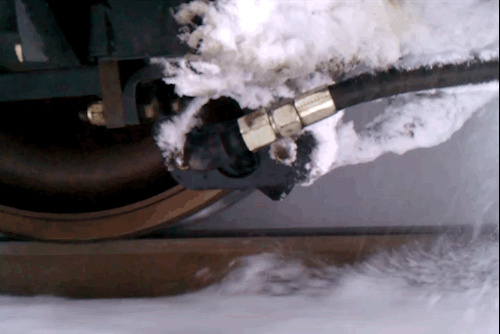
Like an SUV towing a trailer in winter, locomotives can lose their grip on slick rails if they're pulling too much behind them. Since the weather in mountainous areas can change quickly, railroads play it safe and usually only run trains long enough to pull through all weather conditions.
But shorter trains can get expensive. A single rail car can fit enough grain to bake 258,000 loaves of bread, according to the Association of American Railroads. That's why GE locomotive engineers developed a software-guided supersonic air blower.
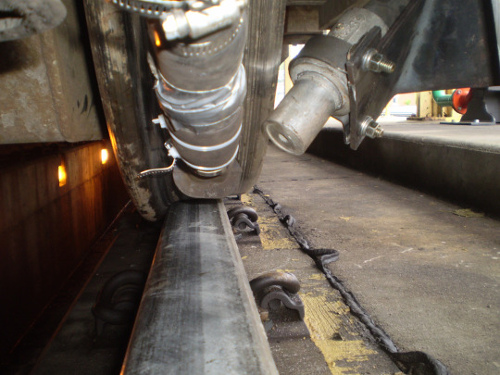
Top-of-story image and image directly above: A supersonic air nozzle blasts away snow, ice, and grit, and keeps the rail clean. [Image credit: GE Transportation[
Take the hilly Ardennes Forest that separates Belgium from Germany. During World War II, heavy snow in the dense woods snared the Allied forces advancing on Berlin during the Battle of the Bulge. That battle now lives on in history books, but the area's fickle weather still causes trouble. "Slick rails are a constant challenge for trains running on Route 42 that starts in Antwerp, Belgium, and heads southeast down to Luxembourg," says Tom Cuthbert, engineering team leader for GE PowerHaul locomotives. "The route passes directly through the Ardennes where rain at the bottom quickly turns to snow at the top."
The problem is so severe that most operators today are not pulling heavy freight trains down the hilly route, Cuthbert says. They take a longer, flatter, and more expensive route around the mountain range.
GE's PowerHaul is one of the few diesel locomotives that can handle the route. But it requires a certain "stickiness" of its wheel, or "48 percent adhesion," in technical terms. "This is difficult to get reliably, due to track and weather conditions," Cuthbert says.
Heavy Haul Power International (HHPI), a European locomotives operator using the PowerHaul, recently invited GE engineers to help them push back against nature and create dry, clean rail conditions even in the midst of heavy snowfall and rain.
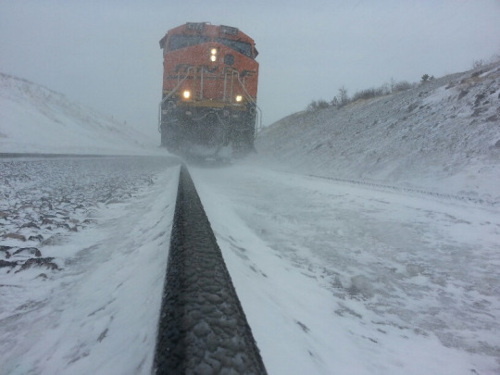
Above and below: GE has equipped more than 300 locomotives with air-blower technology for customers like HHPI, BNSF, and CSX. [Image credit: GE Transportation]
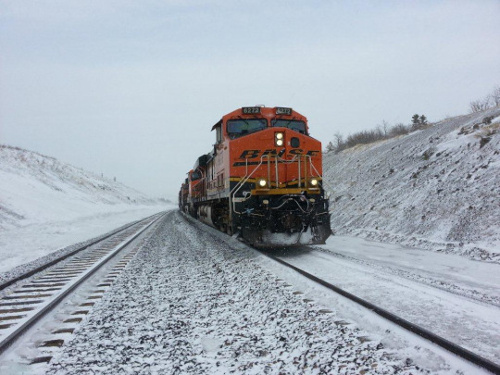
The GE team flew into Belgium with a software-guided high-tech air blower called Advanced Rail Cleaner (ARC). The system directs high-pressure air moving at supersonic speeds in front of the lead axle of the locomotive, blasting away contaminants and moisture.
The technology, developed by a crack team of GE engineers experimenting with high-speed rail scrubbers, had earned an outsize reputation following early test runs. It had consistently increased the tonnage hauled -- the equivalent of pulling four extra jumbo jets -- prevented stalls, increased velocity, and improved the lead locomotive's traction by up to 30 percent.
But ARC had never before been tested in an environment like the route through the Ardennes, and HHPI's ambitious goal was to get the number of cars hauled in wet rail conditions through the hills from 23 to 30.
The team embarked on two days of test runs on tracks slick with a slurry of rainwater, snow, grease, and rust, and the ARC didn't slip up. "We had the worst rail conditions you can imagine, but when ARC cut in, the locomotive held its own superbly and we exceeded our haulage expectations," says Richard Painter, HHPI's managing director.
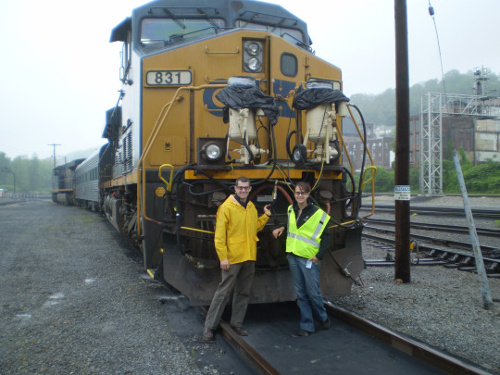
GE Transportation's Matt Malone and Jennifer Coyne with an early ARC prototype of the system. [Image credit: GE Transportation]
Cuthbert says that "ARC reliably maximized the PowerHaul's adhesion to the rail and allowed HHPI to do something nobody else could: pull a 2,700-metric-ton freight train through the Ardennes Mountains in the rain and snow!"
In the five years since it started working on ARC, GE has installed the technology on more than 300 locomotives -- a long journey considering the first prototype resembled a glorified sandblaster strapped to the front of the locomotive (see above), says Jennifer Coyne, a GE engineer who worked on the technology.
The latest version aims the air at the precise spot where the wheel meets the rail. The team has optimized it for performance in high-degree curves and tough environments, and added software that detects when the locomotive is slipping and automatically activates ARC to clean the rail.
"ARC will be a game-changer in the rail industry," says Coyne.
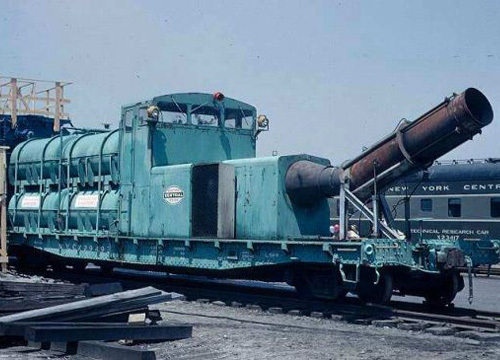
Earlier track cleaners included GE jet engines attached to rail cars. [Image credit: Donald C. Wetzel]
ARC is not the first time a railroad has used GE technology to clean the rails. In the 1960s, rail operators like New York Central and others used GE jet engines mounted on a caboose to blast away snow and sand from tracks. [Image credit: Donald C. Wetzel].
Read more GE Reports at www.gereports.com.
Published May 2015
Rate this article
View our terms of use and privacy policy
